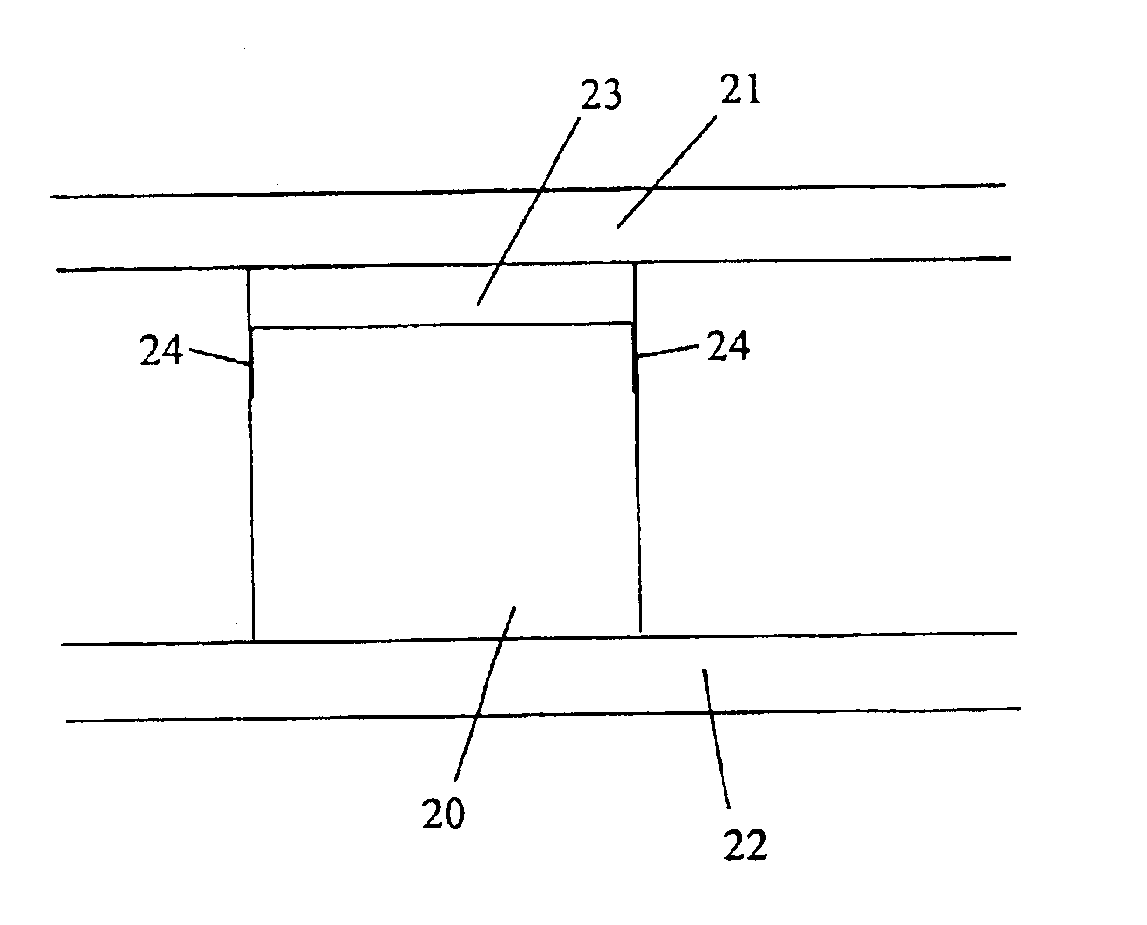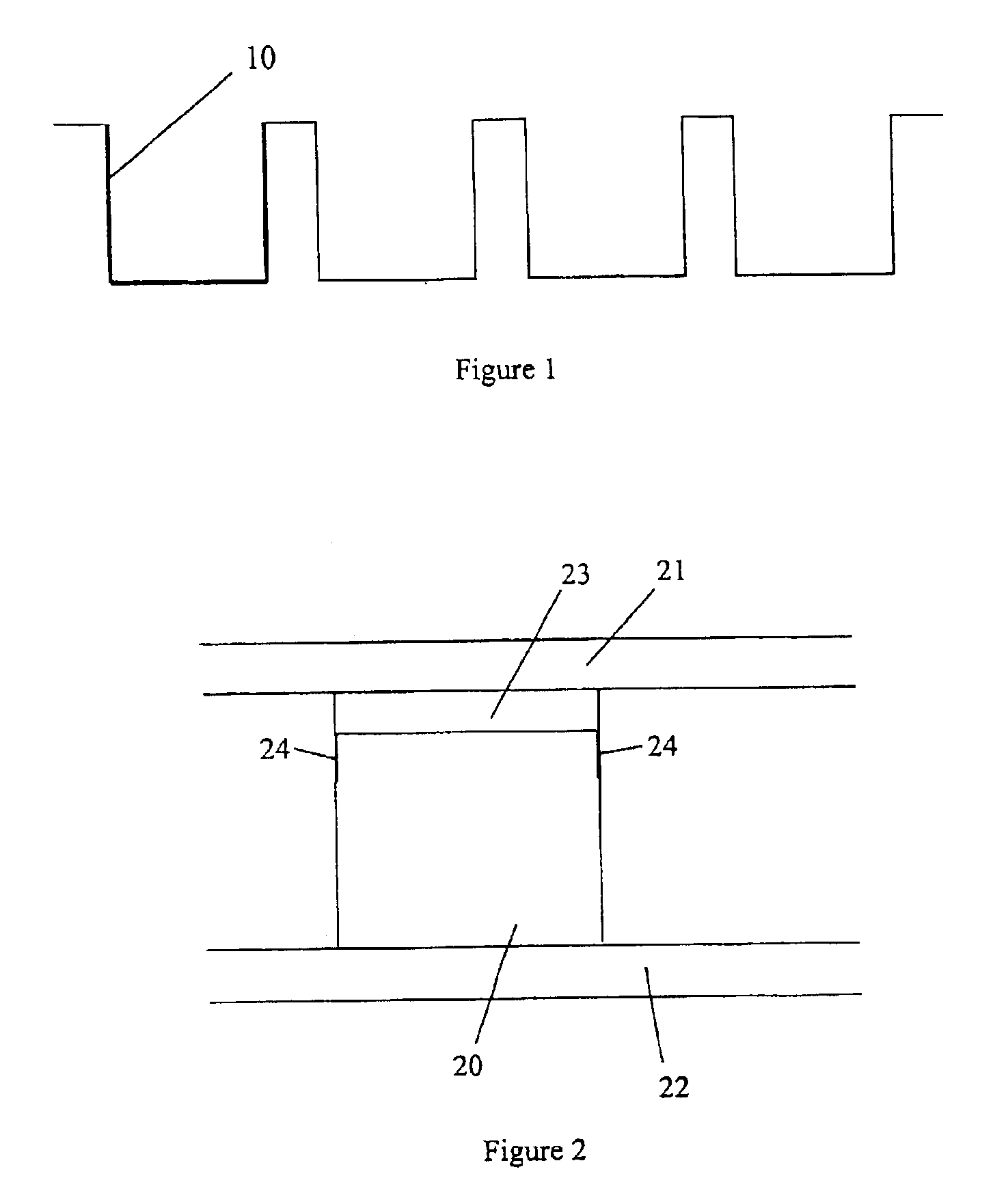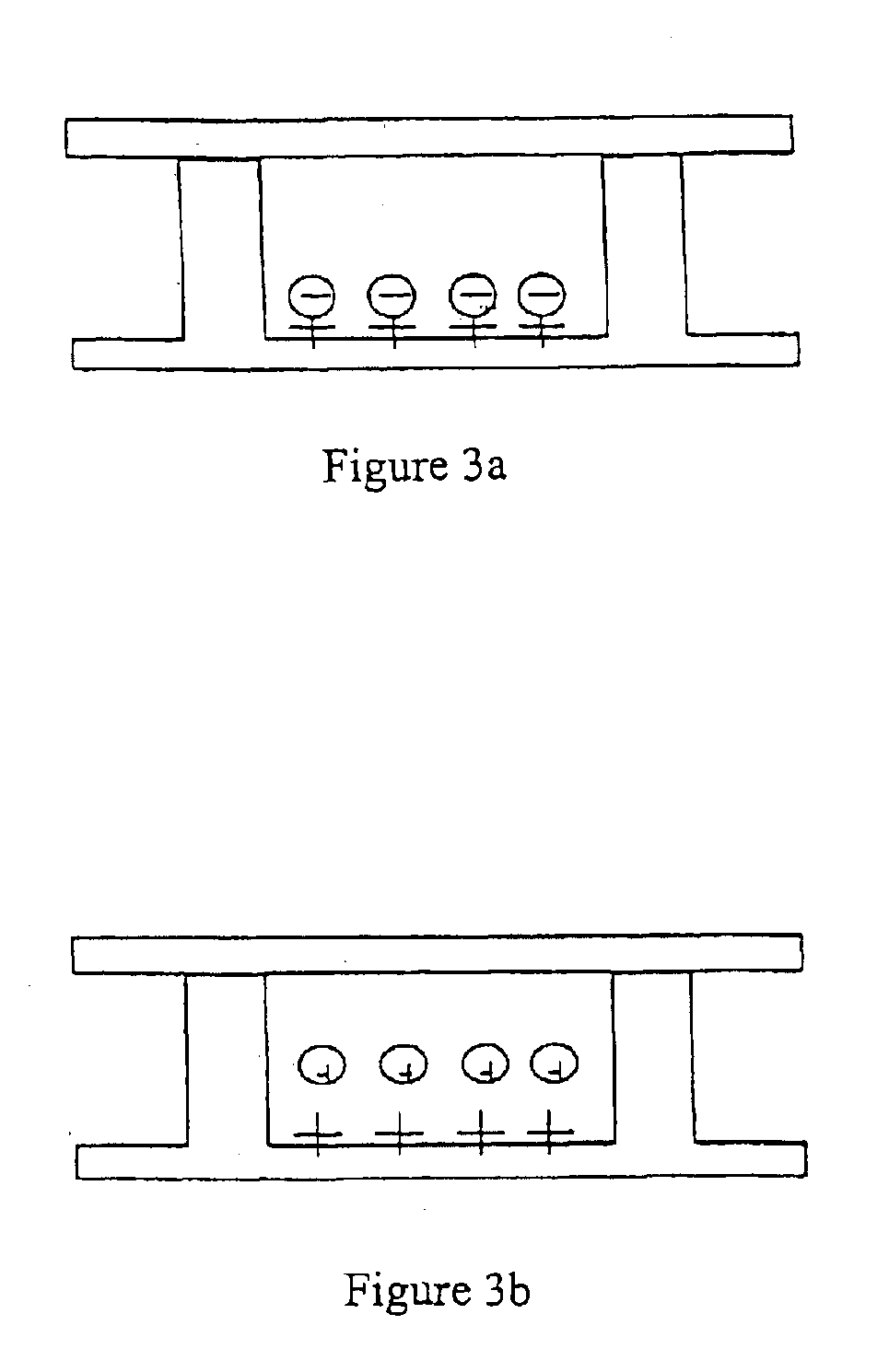Methods of surface modification for improving electrophoretic display performance
a surface modification and electrophoretic technology, applied in the field of electrophoretic display, can solve the problems of severe narrowing of processing and formulation windows for acceptable display performance, and achieve the effects of improving surface properties, reducing electro-optic response time, and high contrast ratio
- Summary
- Abstract
- Description
- Claims
- Application Information
AI Technical Summary
Benefits of technology
Problems solved by technology
Method used
Image
Examples
examples
Sheets of microcup used in the following examples were prepared by embossing of an ITO (Indium Tin Oxide) film coated on a 5 mil PET (polyethylene terephthalate) layer. The sheets were plasma treated according to the conditions indicated below.
In addition to the standard colorless microcups, blue and black colored microcups were also prepared to reduce the light leakage.
The microcups were then filled with an electrophoretic dispersion, sealed with a polymeric layer and finally laminated with a second electrode plate. All of these preparation steps were carried out according to WO 01 / 67170. For treatment with osmium tetroxide, untreated cup substrates were stored in desiccators and all operations were performed in fume hoods.
examples 1-3
An oxygen plasma was applied first to the surface of the microcups at a flow rate of 250 SCCM under vacuum pressure of 150 mtorr and plasma power of 350 watts, for three minutes.
An acrylic acid plasma was then applied at the rate of 12 ml per hour with the carrier gas, Ar, at a flow rate of 50 SCCM under vacuum pressure of 90 mtorr. The plasma power was applied at 75 watts (Example 1), 100 watts (Example 2), and 125 watts (Example 3), for 5 minutes.
Finally, Ar was applied alone at 800 SCCM under vacuum pressure of 430 mtorr for 3 minutes.
examples 4-7
Ammonia gas was applied to the surface of microcups with carrier gas, Ar, at a flow rate of 25 SCCM. The dosages of the ammonia gas applied were as follows:
ExperimentPowerPressure4400 watts120 mtorr5200 watts120 mtorr6400 watts150 mtorr7200 watts150 mtorr
The application lasted for 5 minutes after which the Ar gas alone was applied under pressure of 525 mtorr for additional 3 minutes.
Results for Plasma Treatments
Table 1 summarizes the performance of colorless microcups treated under the conditions of Experiment 6, compared with that of untreated microcups, at driving voltages of 30V and 50V. The cells were filled with a positively charged pigment dispersion.
TABLE 1DmaxDminContrastWithWithoutWithWithoutWithWithouttreat-treat-treat-treat-treat-treat-mentmentmentmentmentment30 V1.711.620.750.939.124.9050 V1.811.720.750.9311.486.17
Table 2 summarizes the performance of blue colored microcups treated under the conditions of Experiment 2, compared with that of untreated blue colored microcu...
PUM
| Property | Measurement | Unit |
|---|---|---|
| temperature | aaaaa | aaaaa |
| temperature | aaaaa | aaaaa |
| dielectric constant | aaaaa | aaaaa |
Abstract
Description
Claims
Application Information
 Login to View More
Login to View More - R&D
- Intellectual Property
- Life Sciences
- Materials
- Tech Scout
- Unparalleled Data Quality
- Higher Quality Content
- 60% Fewer Hallucinations
Browse by: Latest US Patents, China's latest patents, Technical Efficacy Thesaurus, Application Domain, Technology Topic, Popular Technical Reports.
© 2025 PatSnap. All rights reserved.Legal|Privacy policy|Modern Slavery Act Transparency Statement|Sitemap|About US| Contact US: help@patsnap.com



